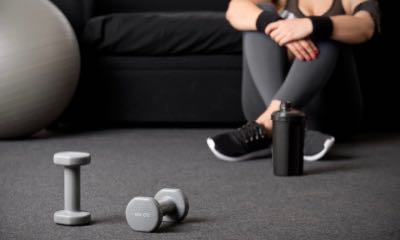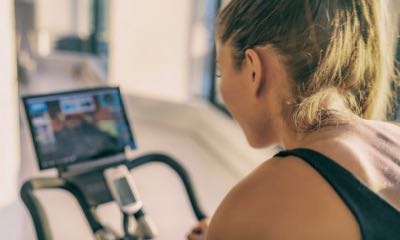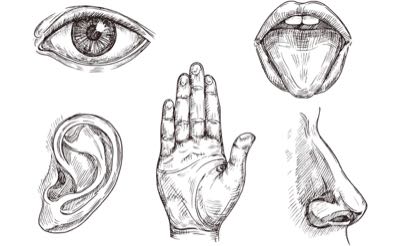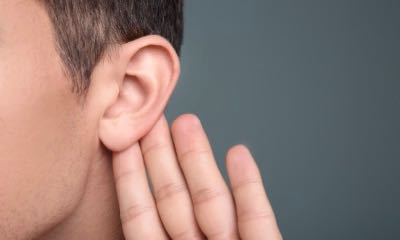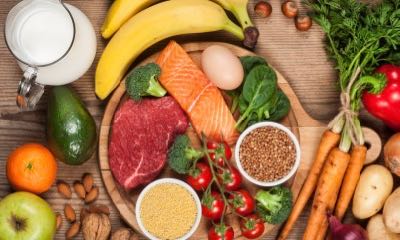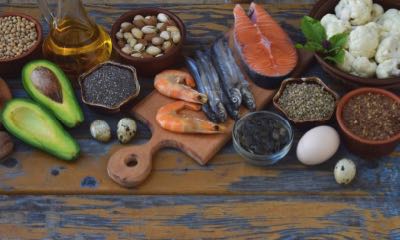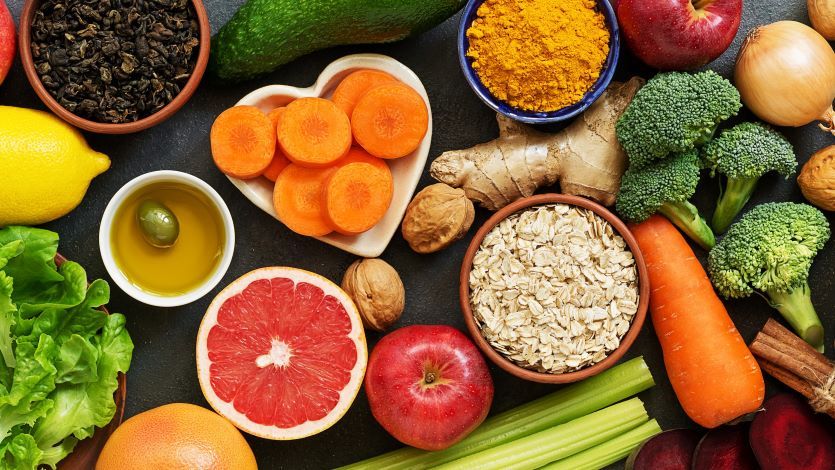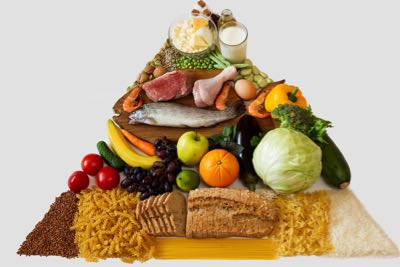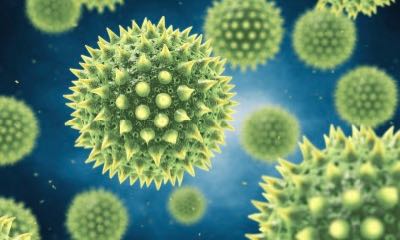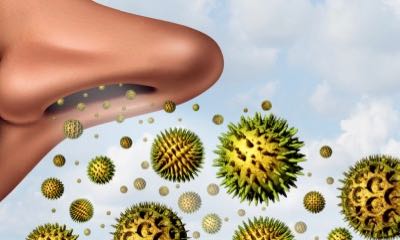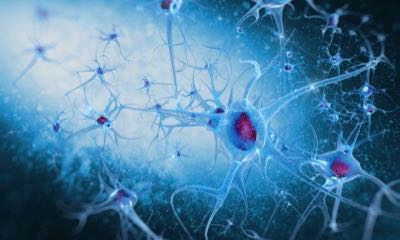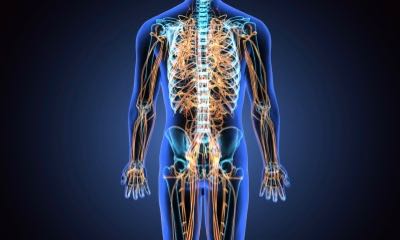The importance of exercise to your overall health can’t be emphasized enough. Regular exercise can help boost heart health and manage weight, while increasing endurance, strength, and flexibility. It’s not just the countless physical benefits, either. Regular exercise can contribute to a healthy state of mind. That means increased social interaction, better sleep patterns, and the release of stress-fighting hormones like serotonin and endorphins.
Basically, exercise is absolutely essential for well-being. But a busy schedule doesn’t always leave a whole lot of time for exercise.
Going to the gym may be a difficult, if not impossible, proposition. Some people just don’t like gyms, either. If you can’t handle the culture you find or don’t appreciate people watching you exercise, a gym membership might go unused.
That doesn’t mean you have to give up exercise entirely, though. There are many ways to stay in shape right in the comfort of your home. Let’s take a look at some of the most affordable and effective ways to exercise without even taking a step outside your front door.
Bodyweight Exercises are Efficient and Free
The gym might have more machines, free weights, and treadmills than you know what to do with. But remember that you can get a great workout without investing a dime towards equipment. Instead, use the bodyweight you already have as resistance for your workout. All you need is a bit of space in your living room, office, bedroom, or even hotel room.
In addition to saving money, bodyweight training can help save time. It requires no special equipment or gear, which means it can be done anywhere and is accessible for almost anyone. Whether on a trip, or busy at work, you don’t have to make it to the gym to stay in shape.
Quick sets of exercises that focus on the full body—like lunges, burpees, squats, crunches, and planks—can be very effective for building muscle. In fact, when done regularly, bodyweight training has shown to be more effective than cardio for weight loss.
Ready to use your built-in workout equipment? A quick search on Google or YouTube will yield more than enough exercises to keep you busy and build a bodyweight workout routine to take anywhere.
Free Weights, Much Better than Machines
Most gyms have a large amount of space dedicated to big resistance machines. That doesn’t necessarily translate well to a house or apartment. The good news is a set of free weights, like barbells, can be tucked into the corner of a room or closet. To make it even better news: free weights offer an all-around better workout than those huge machines.
Most resistance machines require you to sit down and lift weight with a limited range of motion. Free weights, on the other hand, don’t move on a fixed path. This means you have to keep the weights from wobbling around. Your body not only has large muscles like biceps and quadriceps, but lots of smaller stabilizer muscles and a core. Free-weight exercises hit all of these muscles with one simple workout like bicep curls. Because so many muscles work all at once, free weights burn more calories per rep than machines. Muscles working together also means your balance and flexibility improve, too.
Free weights are also readily available, and can often be picked up secondhand for really cheap. Some of the more space-efficient dumbbells can adjust their weight settings from five to 50 pounds. That puts a whole gym in your closet.
For those who might have a bit more space available, it’s tough to beat an old-fashioned adjustable weight bench and barbell. While they can be underappreciated, squats and bench presses are tried and true exercises that work many different muscles in your body. Just the ability to sit, or have the back braced can add stability while focusing on several upper-body muscle groups.
Despite all of the modern machines and technological advances of late, the adjustable weight bench usually is the most-used piece of equipment at most gyms. And it could be at your house, too.
Resistance Bands are a Light, Portable Solution
Resistance bands are long, thin pieces of rubber that have handles attached at either or both ends. They pretty much do what their name suggests—provide resistance to a variety of exercises and movements.
Resistance bands are a great addition to any classic, well-known exercise, and work especially well with bodyweight workouts. They can even add support, not just resistance, to help you work towards more difficult exercises. If you struggle to do a pull up, try using a resistance band to get a little extra boost. Soon enough you’ll be able to perform one unassisted.
Many people struggle with lifting weights, because gravity is providing the primary resistance. This isn’t the case with resistance bands. Their resistance simply comes from the elasticity of the rubber itself. That helps keep your joints safe, while improving range of motion. This is the reason these bands are so widely used by people undergoing rehabilitation after an injury. It also makes them popular for older folks that might not have the strength and balance required for traditional weights.
Some other advantages of bands: they take up little space, are affordable, and especially lightweight. Throw them in a bag on your next out-of-town trip to have easy, quick access to a great workout.
Kettlebells Provide Great Variety
You may have seen kettlebells at the gym. But they also make a great addition to any home gym. While technically a free weight, kettlebells warrant their own discussion due to their incredible versatility.
A kettlebell is a piece of cast iron or other heavy metal that resembles a tea kettle missing a spout. This unique shape is what makes them so effective. A standard dumbbell has its center of mass in the handle, but a kettlebell carries it away from the handle. The kettlebell’s handle is also unique in that it curves into the bulk of the cast iron, which allows the hand to grasp at different angles to open up a wide variety of exercises.
These exercises require more balance and stability to perform than traditional free weights. That provides a total-body workout that annihilates calories. Many exercises cause the heart rate to spike, which means you can achieve a cardiovascular and strength training workout. Some of the most common exercises include kettlebell swings, rows, squats, twists, and presses.
You can find kettlebells at most large retailers or online. They will also fit conspicuously anywhere in your home.
Practice Yoga to Build Flexibility and Mental Health
There is a reason people have been practicing yoga for 5,000–10,000 years. It’s powerful. There are many different schools of yoga that each focus on different aspects of mental, physical, and spiritual practices.
But when most westerners think of yoga, though, they’re referring to Hatha yoga. This type of yoga focuses on performing different poses, or asanas, that have various health benefits.
Regular yoga practice has been shown to:
- increase flexibility
- build muscle
- correct posture
- improve joint health
- support mental health
- balance emotional health
- provide many other positive health outcomes
One of the major advantages of yoga is that you can do it almost anywhere. A yoga mat is all that’s really needed, and that’s only to make some of the poses more comfortable when the floor or ground contacts your body. A class or two at your local yoga studio can help familiarize you with different poses and important breathing techniques, but there are ample free lessons available online.
Stationary Bikes can be Great for Joint Health
Nearly everyone has seen an old exercise bike gathering dust in a basement for the last few decades. Maybe you even have one stashed away somewhere. If you’re serious about getting in shape or losing weight, maybe it’s time to drag that old behemoth out of storage.
A stationary bike is one of the best ways for fitness newbies to start a regular exercise routine. It burns calories quickly, but doesn’t require the same sort of commitment a treadmill or weight-training regimen might. These bikes are also a good choice for elderly folks or those with back, joint, or knee issues. That’s because there is minimal impact. Stationary bikes are also weatherproof. So, if it’s raining, snowing, or just too hot outside, you can still workout.
Stationary bikes have come a long way in the years since your grandmother bought that creaky, old beast, too. Today’s bikes are capable of tracking workouts, providing interval training, and can even have high-definition monitors to watch your favorite TV show or follow along with a personal trainer. The ability to watch the news, a movie, or other entertainment while putting in your miles is one of the major advantages of an exercise bike. If you can be distracted, you may find working out to be less of a chore.
There are some downsides, though. These bikes tend to take up a lot of space, and can be pretty costly. Plan to spend at least a few hundred dollars to ensure you get a quality product that will last. It also helps to speak with a trainer or professional to find one that will fit your size, body type, and needs.
Treadmills: Tried and True
Ahh, the dreaded treadmill. Long the bane of fitness enthusiasts the world over, these machines often take the brunt of exercise frustrations. Maybe because treadmills are an easy target. Or maybe it’s because running can be pretty hard.
The benefits of regular running are clear, though. Not many exercises come close to the mental and physical health it can provide. And if you’re serious about running, a treadmill can be a great choice for your home gym.
While running is an awesome exercise, it’s not for everyone. It can be particularly difficult for those with knee and joint issues. That’s because the impact of jogging on hard concrete or the uneven terrain of trails can be problematic. Today’s treadmills can alleviate that issue. These machines are designed with softer surfaces, and often have shock absorbers that can help reduce the impact involved with running.
There are other safety issues to consider, as well. Because many people don’t pay enough attention to pedestrians when driving, running outside at night can be dangerous. Women can be particularly at-risk due to the harassment and unwanted attention they can receive. A treadmill can at least help mitigate some of that.
Like a stationary bike or other larger equipment, cost and space can be factors. But if you choose to purchase one, speak with a professional to run over all your options. Perhaps try a few different models out to see which will fit your budget and lifestyle.
Make a Plan, and Stick with It
The type of equipment you ultimately purchase for your home isn’t nearly as important as developing an exercise routine and making it a habit. Whether you wake up early every day or burn some calories just before bed, consistency matters.
Try setting goals and daily alarms to remind yourself. Plan your workouts a week or a month in advance. And track your progress. Working out with a friend can also help you stay accountable.
Whatever the case, having some equipment set up at home can help you on the road to better fitness. Keep at it, and before long you will start to see results.
References
https://www.bona.co.za/5-benefits-of-bodyweight-training/
https://www.shape.com/fitness/workouts/strength/free-weights-benefits
http://citeseerx.ist.psu.edu/viewdoc/download?doi=10.1.1.1009.3389&rep=rep1&type=pdf
https://8fit.com/fitness/resistance-band-benefits-and-workouts/
https://dailyburn.com/life/fitness/kettlebell-swing-workout-benefits/
https://www.yogajournal.com/lifestyle/count-yoga-38-ways-yoga-keeps-fit
https://www.webmd.com/fitness-exercise/features/fitness-basics-exercise-bike-is-back#4
https://livehealthy.chron.com/health-benefits-routinely-riding-stationary-bike-1809.html





